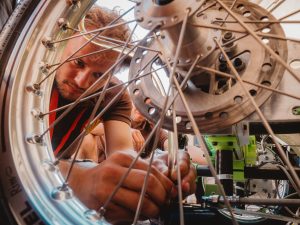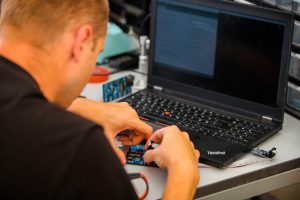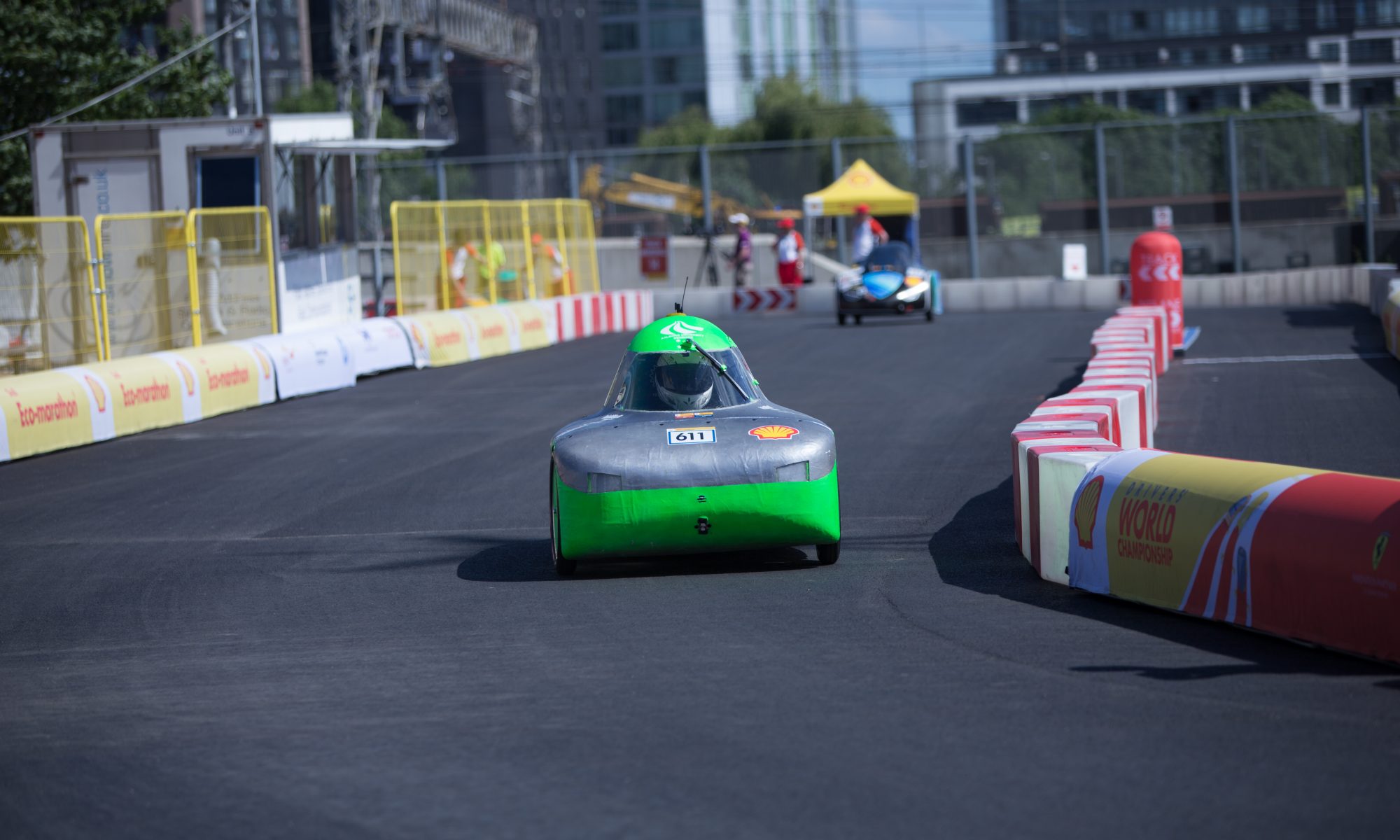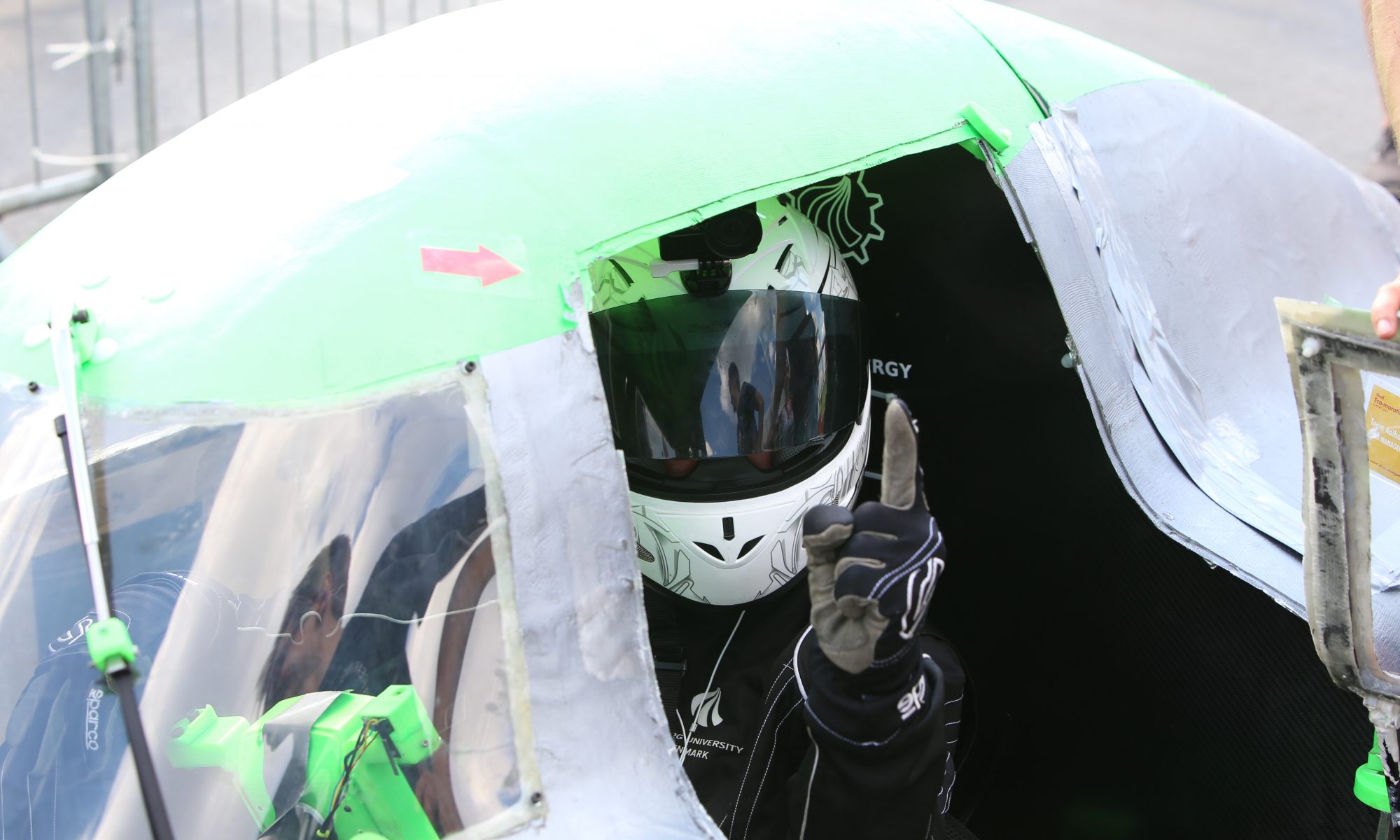Because we compete in the UrbanConcept class, our car basically has the same requirements as a consumer car, this also means that there are some of the same problems to solve.

The drive train consists of electric motor(s) directly rotating the back wheels. The drive train is powered by an open-cathode fuel cell stack supplied with hydrogen.
Just in the drive train alone there is advanced thermodynamics, control systems and power electronics. A lot can be done here in order to get the maximum efficiency desired.
The shell of the car is home made, it was designed in a thermodynamics master thesis and built in a container. The largest challenge here is to make the shell as light and stiff as possible while still making it durable. This is in theory easy enough but in practice it is a bit harder.

The body of the car is stiffened by a frame of carbon tubes. All the tubes are connected with 3D printed mounts which are all drawn in the lab. The steering is also 3D printed which could be a mechanical concern, but using the right plastic and designing correctly makes it a viable option.
A mechanical engineer or just someone who likes to draw and 3D print would find their work cut out for them here.

The subsidiary electronics in the car connects the front with the rear, the driver can control lights, motor thrust etc. from the steering wheel with a push of a button. The communication used is called CANbus which is what consumer cars also use, so besides actually making the prints and soldering them there is also a programming challenge here.
Besides working on the car there is also sometimes extra tasks popping up, like working on a section of the lab to make it easier to use.

